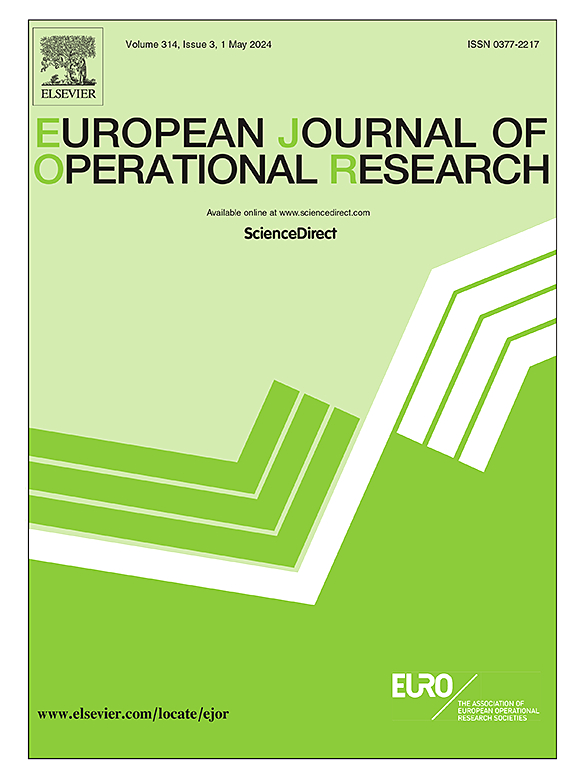考虑沟通顺序的基于首因效应的多层次渗透大规模群体决策动态反馈机制
IF 6
2区 管理学
Q1 OPERATIONS RESEARCH & MANAGEMENT SCIENCE
引用次数: 0
摘要
在具有超大规模决策者和资源约束的决策环境中,社会网络大规模群体决策(SN-LSGDM)中决策者之间的广泛互动往往导致决策效率低下和信息冗余。为了解决这一问题,本文探讨了多层次渗透大规模群体决策(MI-LSGDM)事件,并提出了一种基于首因效应的动态反馈(PE-DF)机制。该机制将沟通过程整合到达成共识的过程中,并引入了一种综合了dm意见、行为和关系特征的沟通者识别方法。这种方法有效地将很大一部分评估信息从更广泛的决策圈通过确定的传播者传递给内部圈子,同时促进内部圈子向整个群体的共识扩散,从而减少有偏见的决策。考虑到传播过程中dm对初始信息的偏向所产生的首因效应,本研究构建了传播序列优化模型,引导内圈dm快速达成共识,加速共识的多层次渗透。通过实例和一系列对比实验,验证了沟通者识别方法在不同决策场景下的灵活性,并证明了沟通序列优化模型在有限的时间和资源内促进高效信息交换和共识建立的能力。总体而言,提出的PE-DF机制解决了传统SN-LSGDM模型受DM规模和资源可用性约束的实际局限性,在更广泛的决策场景中表现出较强的性能和鲁棒性。本文章由计算机程序翻译,如有差异,请以英文原文为准。
Primacy effect-based dynamic feedback mechanism considering communication sequence for multilevel infiltrative large-scale group decision-making
In decision-making environments with ultra-large-scale decision-makers (DMs) and resource constraints, the extensive interaction among DMs in social network large-scale group decision-making (SN-LSGDM) often leads to inefficiencies and redundant information. To tackle this challenge, this paper explores the multilevel infiltrative large-scale group decision-making (MI-LSGDM) event and proposes a primacy effect-based dynamic feedback (PE-DF) mechanism. This mechanism integrates the communication process into the consensus-reaching process and introduces a communicator identification method that synthesizes DMs’ opinion, behavioral, and relational characteristics. This method effectively channels a significant portion of assessment information from a broader decision-making circle to the inner circle through identified communicators, while promoting the diffusion of consensus from the inner circle to the entire group, thereby mitigating biased decisions. Considering the primacy effect where DMs’ bias toward initial information encountered during communication, this study constructs a communication sequence optimization model, guiding DMs in the inner circle to achieve consensus quickly and accelerating the multilevel infiltration of consensus. An illustrative example and a series of comparative experiments validate the flexibility of the communicator identification method across various decision-making scenarios and demonstrate the ability of the communication sequence optimization model to promote efficient information exchange and consensus-building within limited time and resources. Overall, the proposed PE-DF mechanism solves the practical limitations of traditional SN-LSGDM models constrained by DM scale and resource availability, exhibiting strong performance and robustness across a broader range of decision-making scenarios.
求助全文
通过发布文献求助,成功后即可免费获取论文全文。
去求助
来源期刊

European Journal of Operational Research
管理科学-运筹学与管理科学
CiteScore
11.90
自引率
9.40%
发文量
786
审稿时长
8.2 months
期刊介绍:
The European Journal of Operational Research (EJOR) publishes high quality, original papers that contribute to the methodology of operational research (OR) and to the practice of decision making.
 求助内容:
求助内容: 应助结果提醒方式:
应助结果提醒方式:


